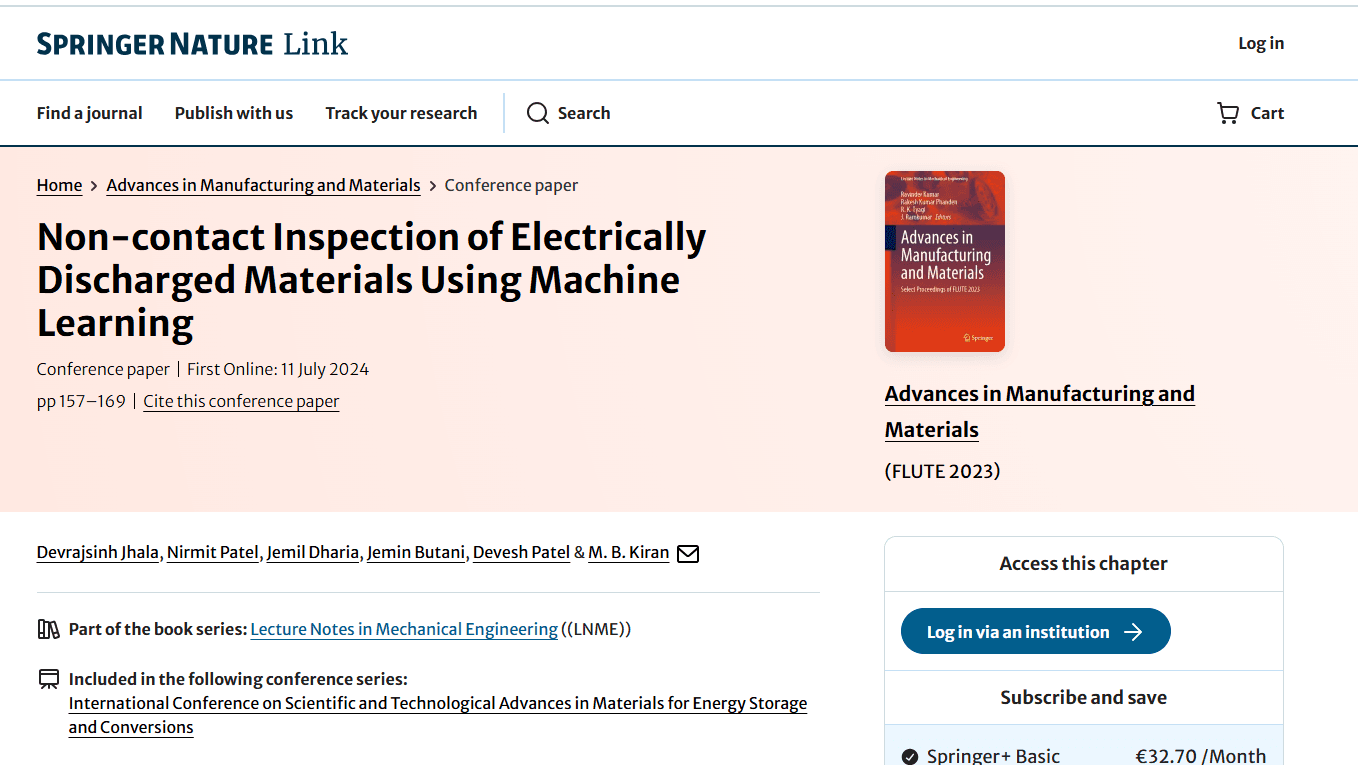
Non-contact Inspection of Electrically Discharged Materials Using Machine Learning
Overview
This project focuses on predicting surface roughness of metals machined by Electrical Discharge Machining (EDM) using non-contact inspection methods and machine learning. Traditional inspection techniques are often contact-based, slow, and risk damaging the surface. Our research introduces an intelligent, data-driven alternative that leverages regression algorithms on an experimentally collected and augmented dataset.
What is EDM & Why This Matters
Electrical Discharge Machining (EDM) is a widely used non-conventional manufacturing process especially suited for hard-to-machine materials. However, surface roughness (Ra) — a critical quality metric — is traditionally measured using physical probes. These contact-based inspections are not only time-intensive but also pose a risk to the integrity of high-precision surfaces.
Our goal was to eliminate this need by building a predictive model that estimates surface roughness using only input process parameters — enabling instant, accurate, and safe evaluation.
Data Collection & Augmentation
We collected experimental data using a real EDM machine setup at our university. Key process parameters such as:
- Pulse On Time
- Pulse Off Time
- Current
- Voltage
were recorded along with the corresponding measured surface roughness (Ra).
To overcome the limited sample size (31 data points), we applied extensive data augmentation using techniques like:
- Scaling and shifting
- Controlled noise injection
This increased our dataset to 9,300 samples, making it suitable for robust machine learning.
Models Used
We explored and compared the performance of three regression algorithms:
- K-Nearest Neighbors (KNN)
- Support Vector Regressor (SVR)
- Random Forest Regressor (RFR)
Each model was trained on an 80:20 split of the dataset and evaluated using standard metrics like R² score and Mean Squared Error (MSE).
Key Findings
Among all models, K-Nearest Neighbors (KNN) consistently outperformed the others with:
- R² Score ≈ 0.999
- MSE ≈ 0.00157
This suggests that for this dataset, local similarity-based methods like KNN are highly effective in capturing the relationship between EDM parameters and surface roughness.
We also visualized:
- Predicted vs. Actual scatter plots
- Residual histograms
which confirmed the tight, unbiased predictions made by KNN across the data range.
Benchmarking vs Literature
We reviewed several other approaches used in industry and academia — including neural networks, W-ELM, SinGAN, Taguchi-ANN hybrids, and fuzzy logic systems. Surprisingly, our simpler KNN-based approach either matched or exceeded their performance while being computationally efficient and easier to deploy.
My Role
I was actively involved in:
- Conducting EDM experiments
- Designing the data augmentation strategy
- Implementing all regression models
- Analyzing and visualizing results
- Comparing outcomes with other state-of-the-art methods
Future Scope
- Real-time integration of this model with EDM machines for live surface monitoring
- Using deep learning or transformers on surface image data for further generalization
- Exploring 3D surface reconstruction with non-contact sensors
Final Takeaway
This research showcases how simple but well-prepared machine learning models can effectively replace traditional, invasive inspection techniques — enabling smarter, faster, and safer manufacturing practices.